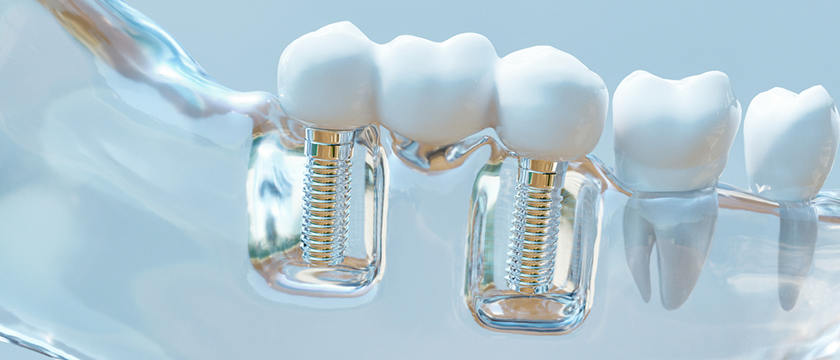Dental implants have emerged as a leading treatment option for replacing missing teeth, offering patients a durable and natural-looking solution that enhances both function and aesthetics. However, like any medical procedure, dental implants are not without their drawbacks and potential complications. Understanding the downside of dental implants is crucial for patients considering this treatment option, as well as for dental professionals involved in implant dentistry.
Introduction
Dental implants consist of titanium posts surgically placed into the jawbone to serve as artificial tooth roots. These implants are designed to support various types of dental prostheses, such as crowns, bridges, or dentures, depending on the patient’s specific needs. While dental implants boast numerous benefits, including improved chewing ability, speech clarity, and preservation of bone structure, it is essential to acknowledge and address the potential downsides associated with this treatment modality.
1. Potential Complications And Challenges
Despite their high success rates, dental implants may present several challenges and complications that patients should be aware of. These include:
SEE ALSO: Can Dental Implants Be Placed Immediately After Extraction?
Surgical Risks and Complications
The surgical placement of dental implants involves invasive procedures that carry inherent risks, albeit minimal in most cases.
These risks include:
Infection: Although uncommon, infections can occur at the implant site during or after surgery. Proper sterilization techniques and adherence to strict aseptic protocols are essential in minimizing this risk.
Damage to Surrounding Structures: During implant placement, there is a slight risk of damaging adjacent teeth, nerves, or blood vessels.
Experienced dental professionals mitigate these risks through careful planning and precise surgical techniques.
Sinus Issues (for Upper Jaw Implants): Implants placed in the posterior upper jaw may protrude into the sinus cavity.
This can lead to sinusitis or discomfort, requiring additional procedures such as a sinus lift to create adequate space between the implant and the sinus membrane.
2. Osseointegration Challenges
Osseointegration is the process by which the dental implant fuses with the surrounding bone tissue. While this process is essential for the long-term success of implants, several factors can impact osseointegration:
Bone Quality and Quantity: Insufficient bone volume or density in the jawbone can compromise the stability and integration of dental implants. Bone grafting procedures may be necessary to augment the bone structure and enhance implant success rates.
Smoking and Tobacco Use: Tobacco consumption, particularly smoking, has been linked to reduced blood flow and delayed healing, negatively impacting osseointegration. Patients are advised to quit smoking before undergoing implant surgery to optimize outcomes.
3. Long-Term Complications
While dental implants are designed to be a permanent solution, long-term complications can arise over time, necessitating ongoing maintenance and potential interventions:
Peri-Implantitis: This condition resembles periodontal disease and involves inflammation and infection of the tissues surrounding dental implants. Peri-implantitis can lead to bone loss around the implant, jeopardizing its stability and longevity.
Implant Failure: Despite advancements in implant technology and surgical techniques, implant failure can occur due to various factors, including infection, excessive stress on the implant, poor oral hygiene, or systemic health conditions.
Patient-Specific Considerations
Several patient-specific factors can influence the success and potential complications associated with dental implants.
These considerations include:
Medical History: Certain systemic conditions, such as diabetes, autoimmune disorders, or history of radiation therapy to the head and neck region, may affect healing and increase the risk of complications following implant surgery.
Oral Health Status: Patients with a history of periodontal disease or inadequate oral hygiene practices may be at higher risk of peri-implantitis and implant failure. Comprehensive oral health assessments and treatment may be necessary before proceeding with implant placement.
Smoking and Lifestyle Habits: Tobacco use, including smoking and chewing tobacco, significantly impairs healing and increases the risk of implant complications. Patients are encouraged to quit smoking before undergoing implant surgery to enhance treatment outcomes.
Cost Considerations
The cost of dental implants is another important factor that patients should consider. While dental implants offer long-term benefits and durability, they typically involve higher upfront costs compared to alternative tooth replacement options, such as bridges or dentures.
Factors influencing the cost of implants include:
Surgical Complexity: The complexity of implant placement, including the need for bone grafting or additional procedures, can influence treatment costs.
Prosthetic Components: The type and material of the prosthetic restoration (e.g., single crown, implant-supported bridge) impact overall treatment expenses.
Insurance Coverage: Dental insurance coverage for implants varies widely among providers and plans. Patients are advised to verify coverage details and consider financing options if out-of-pocket expenses are a concern.
Alternative Treatment Options
While dental implants are considered the gold standard for tooth replacement, alternative treatment options may be suitable depending on individual circumstances:
Fixed Dental Bridges: Bridges are prosthetic devices anchored to adjacent natural teeth or dental implants, providing a non-removable solution for replacing missing teeth.
Removable Dentures: Full or partial dentures are removable prosthetic appliances that replace multiple missing teeth.
They offer a more affordable alternative to dental implants but may require periodic adjustments and maintenance.
Resin-Bonded Bridges (Maryland Bridges): These conservative bridges are bonded to adjacent teeth using resin, preserving tooth structure but may not be as durable as traditional fixed bridges or implants.
Conclusion
While dental implants offer significant advantages in terms of function, aesthetics, and longevity, they are not without potential drawbacks and considerations. Patients considering implant treatment should undergo comprehensive evaluations, including medical and dental assessments, to assess candidacy and anticipate potential risks. Collaborative discussions between patients, dentists, and specialists, such as periodontists or oral surgeons, are essential in making informed decisions about tooth replacement options. By understanding the downside of dental implants and addressing potential challenges proactively, dental professionals can optimize treatment outcomes and patient satisfaction in implant dentistry.

